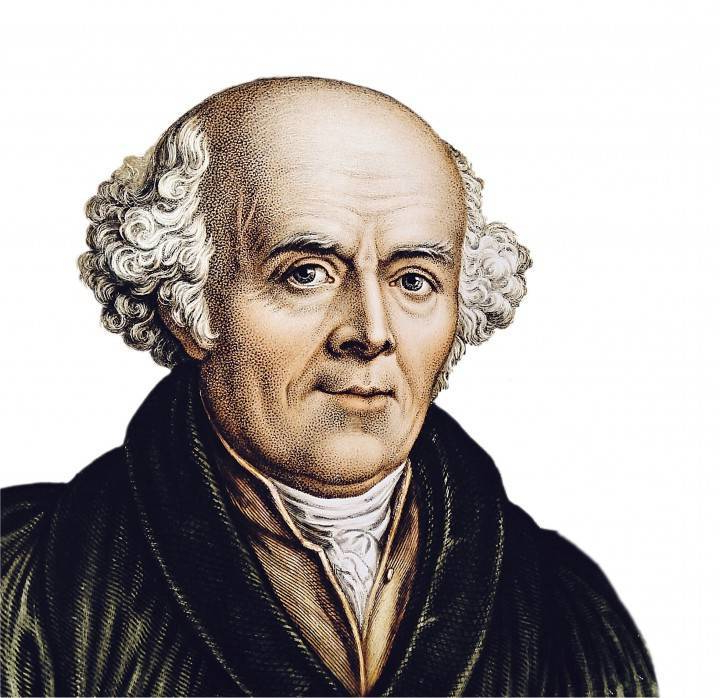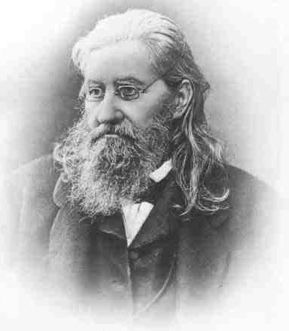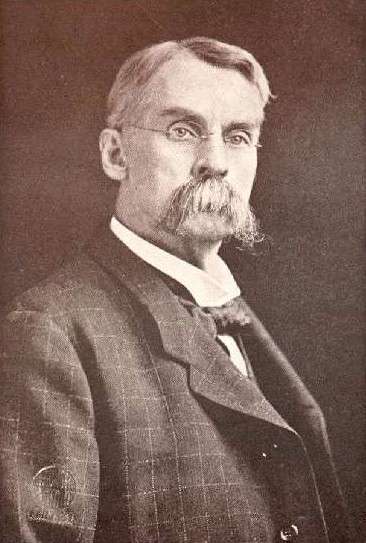As later publications show, Hering did not feel compelled to revise his views on the basis of other observations. In 1864, for example, he declared in the Homöopathische Vierteljahresschrift in a dispute with Dr David Roth's criticism of Hahnemann:
"[...] This same peculiar faculty showed him [Hahnemann; author's note] the difference between the healed and the unhealed. This alone made it possible for him to make the great discovery, unnoticed in the text-books of homœopathy, that the signs must be raised in the reverse order of their origin, that the signs last produced are always the most important in the choice, that is, what the faithful followers must and have inferred as necessary, namely, that when the signs cease in the reverse order of their production, the patient remains cured, but not in any other order.
The same ability to make observations of such importance made him realise that the chronic patients in whom a rash developed were not only improved during this process, but also after its cessation, more and more persistently than when internal signs ceased without the appearance of external ones. It is similar with the cessation of the signs first above, then further below; which always allows us a better prognosis, often that of permanent healing. Yes, it is quite in accordance with the foregoing, because the uppermost corresponds to the innermost, the lowermost to the outermost." (Hering, 1864, p. 1311)
It is questionable how many German colleagues even read these arguments entitled "Schachzüge". The chapter "Anweisung, wie man dem Arzte Bericht erstatte" in Constantin Hering's Homöopathischer Hausarzt probably contributed to the much greater awareness (not to say popularity) of Hering's rule. From the 12th edition of 1864, Hering had supplemented this section and explained here:
"Above all, however, it is important to give an exact account of the sequence in which the various complaints have arisen. Just as it is not the right of any patient to determine what he wants to be cured by the physician and what not, but it is necessary that the physician should know everything, because all healing must aim at curing the whole man, but this can only ever be done from within outwards, or from above downwards, so also the physician must know exactly the order in which everything arose. This is also one of those great laws which Hahnemann discovered, that in every patient the various complaints which gradually appear must always be removed in the reverse order of their origin, that is, the last first, and the oldest last, and this cannot be changed; if the patient and his physician do not follow this exactly, nothing will come of the cure, and the patient will either not get well at all, or will not remain so for long." (Hering, 1864, p. 16]
Richard Haehl, who was responsible for the further publication of the 19th edition of the Homeopathic Family Doctor from 1905, removed this passage in his subsequent and (in some cases significantly) modified versions. By then, however, 7 editions of the successful homeopathic guide had been sold. This important paragraph does not appear in the English- and French-language publications based on Hering's Hausarzt that were circulating at the time.
The unaltered reprint published by Verlag v. d. Lieth in 1997 is fortunately based on the 14th edition of 1875, which was still authorised by Hering.
In 1865, Hering then went into the subject again in detail and with explanations in the essay Hahnemann's three rules concerning the rank of symptoms:
"[...] the quintessence of his doctrine is, to give in all chronic diseases, i. e. such as progress from without inwardly, from the less essential parts of our body to the more essential, from the periphery to the central organs, generally from below upwards, -to give in all such cases by preference, such drugs as are opposite in their direction, or way of action, such as act from within outward, from up downward, from the most essential organs to the less essential, from the brain and the nerves outward and down to the most outward and the lowest of all organs, to the skin. [...] Hahnemann's doctrine of treating chronic diseases, includes another and opposite, viz.: the opposite direction in the development of each case of chronic disease. All the antipsoric drugs of Hahnemann have this peculiarity as the most characteristic; the evolution of the effects from within towards without." (Hering, 1865, p. 6 f.)
Here, Hering furthermore recommends, when selecting remedies, “to give in all such cases by preference, such drugs as are opposite in their direction, or way of action”. Apparently, his focus was more on conveying practically applicable rules than on postulating strict laws.
In 1875, Hering adopted Hahnemann's order of symptoms in his work Analytical Therapeutics of the Mind. Here he reaffirmed his observations that in a curative course the symptoms disappear in the reverse order of their appearance. (Hering, 1875)
The repeated publication of Hahnemann's three rules concerning the rank of symptoms, for example in The Medical Advance (1892), in Transactions of the Worlds̓ Congress of Homœopathic Physicians and Surgeons (1893) and in The British Homoeopathic Review (1909), shows that the topic was of interest to homeopathic physicians at the time and was also discussed. (Hering, 1865)


